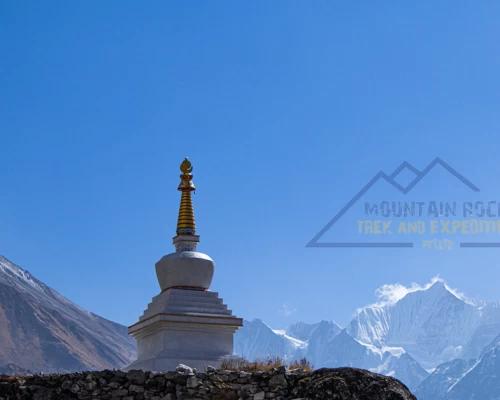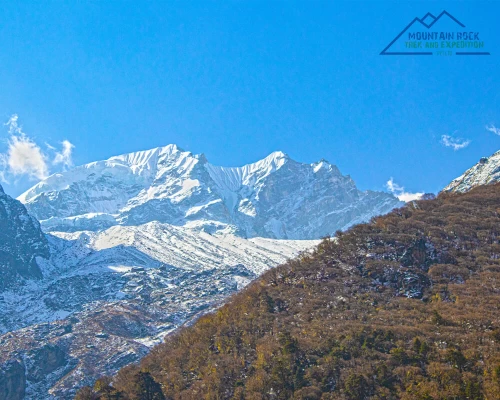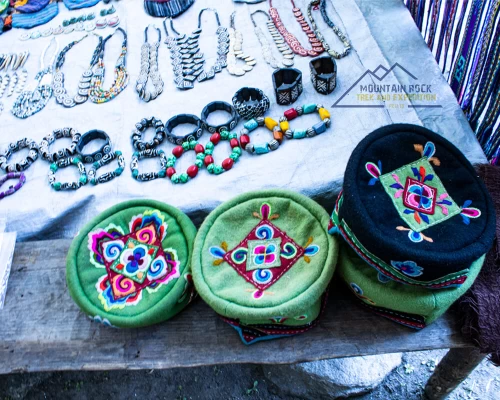Tamang Heritage Langtang Trekking is a cultural hike that delivers the guests a close up experience of the Tamang villagers' distinctive culture, traditions, norms and way of life. These 15 days journey takes you to an environment rich in both culture and nature, where you will be familiar with the customs of the main inhabitants of the region and take in the never disappearing natural magnificence of the Himalayas.
The 13 days of Tamang heritage & langtang valley trek leads through the real living villages of the Tamangs, where their unique culture, art, traditions and religious significance have stayed strong since the old times.
The trip takes 13 days to finish. Within the 13 days you will receive a wilderness adventure taste along with the culture on the great mountains, open fields, rhododendron trees and tamang people. The area also shows off its rich flora and fauna with the presence of different and rare wildlife species , like red pandas, leopards, musk deer and black bears.
The path you will be travelling is mostly located between the green forests with rhododendrons trees being the majority of them. Still there are other Flora and fauna which includes various species of plants, butterflies and birds to bless your eyes.
Tamang Heritage Trail trek Excursion can easily be combined with the Langtang valley trek. Thus, the unify trip proposes an opportunity to interact with locals living near the Tamang heritage and Langtang path. In addition, You can also find out about their traditions, language, and craftworks as you detour around and through beautiful villages mainly colonised by the Tamangs and people from Tibetan descent.
The lower villages where you start your adventure, like Gatlang, Tatopani, Thuman, and Briddim, are the residential areas of Tamangs. Similarly, after reaching the village of Langtang and its monastery at Kyangjin, the people who reside there are of Tibet heritage. The walk includes lovely rhododendron trees and great views of the Langtang mountain ranges.
This walk is great for kids and older folks, so it's a good pick for families or students who want to ramble in Nepal. You can now book for 2026 and 2027. If you have any questions about the Tamang Heritage Langtang Trekking, please feel free to contact us.
Tamang Heritage Trekking Highlights
- Sacred Tibetan Cultures
- Flora and fauna
- Rare and Endangered Species
- Tamang communities and their cultures
- Woodlands and dense forest
- Plateaued grasslands
- Rhododendron trees and birds
- Buddhist cultural values
- Old and preserved monasteries
- Parvati Kunda, a sacred lake
- Cultural and traditional houses
- Homestay in Tamang community
- Tamang foods and Hospitality
- Stunning ice caved peaks
- Local village and community
- Glorifying panoramic view of the Himalayas
- Manaslu Massif
- Ganesh Himal
- Langtang peak
- Jugal Himal
What to Await With Tamang Heritage Langtang Trekking?
You can expect to discover new things daily while visiting these parts of the Langtang region in Nepal. During your 13 days culturally and naturally enriching escapade to Tamang heritage and Langtang Valley, you can live with local culture in Tamang villages or see amazing mountain views at Langtang Valley. You will have fun learning about the area's rich culture and beautiful nature in two weeks while staying in a small village.
You will also go to unique monasteries with their holy energy. The trip is great for adventure and educating oneself about culture, creating memories that won't be forgotten in the heart of Nepal.
This voyage to Langtang Valley gives you a full mountain familiarity with little risk. Go to old valleys and experience the Tamang culture, old Tibetan culture, traditions, norms, and beliefs. Stay near lovely mountains and streams with cold waters from glaciers while you carry it out.
History Of Tamang living
The Tamang people are a native tribal group in Nepal who use the Tibeto-Burmese language. In Nepal's history, the Tamang tribe moved from Tibet to make their homes in the beautiful Langtang area. There's an old song called "Gyanaka Games Phepkaziam'" which means 'came from China.' This song shows that Tamang is the oldest Yambu tribe to move from China to Nepal. The Tamang people, often called the Nepalese mountain dwellers, mostly shack up in the Langtang Valley. The Tibetan Buddhism and Animism practices strongly influence these locals.
Difference Between Gurung and Tamang
Tamang Heritage Trekking is an ideal mixture of culture and nature in a single odyssey. Most people often get their hopes high to see the great culture of both Gurung and Tamang as they think of these two different ethnic groups as the same. What outsiders must know is that there is a huge Difference Between Gurung and Tamang.
The Gurung people habituate mostly the middle and west. They are prominent for being brave, their strong military tradition of Gurkhas, and many interesting stories they tell. On the other hand, the Tamang community, which is common in mountain areas, has a culture influenced by Tibet. They also speak their language and celebrate colourful festivals.
Gurungs usually follow a mix of Buddhism and Bon traditions, but Tamangs mainly practice just Buddhism. Tamang Heritage Langtang Trekking primarily includes activities mainly exhibiting the Tamang people's values, culture, and traditions along with the natural wonders of the Langtang region.
Langtang Tamang Heritage Trail Trek Mountain Views
The Langtang Tamang Heritage Trail trek is an amalgamation of two different paths located in the Langtang national park area of Nepal. This protected zone is called
mountainous landscape area as it boasts 68 named mountains ranging in different elevation of 7000m, 6000, and 5000 m. The Langtang and Ganesh Himal mountain ranges extend across the park. You will get an amazing mountains views of the peaks like Langtang Lirung (7 227 m), Langtang Ri (7 205 m) , Dorje Lhakpa (6 966 m), Luri Himal (6 924 m), Gurkarpo Ri (6 891 m ), Ganchenpo (6 313 m), Kyunga Ri (6 601 m) etcs.
Reach Highest Point- Ancient Kyanjin Gompa
Kyanjin Gompa at 3,860m is the maximal point we reach if we decide not to take an acclimatisation hike to Tsergo Ri (5033 m/16,500 ft).
Kyanjin Gompa is a 280-300-year-old Buddhist monastery near the Langtang Mountain Range and south of Tibet. This upper part of the region is inhabited by the local Tamangs, who resemble Tibetans' culture, traditions, and lifestyles migrated from Tibet many years ago.
This beautiful destination promises an awe-inspiring sight of both unnamed and named mountains like Dorje Lakpa, Gangchenpo, Ganjala Peak, Changbu, Morimoto, and many more.
The valley named after the holy Buddhist monastery is also the Langtang Valley's highest human settlement. Nicknamed the Himalayan Valley, it provides you with great insight into the confluence of Tibetan Buddhist religious faith and its ancient heritage.
Tatopani Hot Springs with a View
Tatopani Hot Springs is not about taking a simple bath in the large pools filled with big water. These natural fountains are frequented and loved for their high mineral content in the water. This gives many proven health benefits that have been studied thoroughly.
This spring water, full of minerals, can help clean the body. It might also speed up your slow metabolism and make sore muscles feel better faster, which provides much-needed relief from the tiring trek during your Tamang Heritage Langtang Trekking. This hydrothermal spring shows the beautiful and snowy alpine heights of the Himalayan ranges like Annapurnas and Dhaulagiri.
Vibrant Tamang Villages, Heritage and Culture
Syabrubesi, Gatlang, Tatopani, Thuman, and Briddim are the prominent stops during your Langtang Tamang heritage trekking. These hamlets showcase their heritage culture, ethos, tradition, and lifestyles, deeply rooted in ancient Buddhism and Tibetan traditions. Not only are the Tamang people around these stops famous, but the houses built by them in a traditional architectural style are appealing too. The settlements in these main townlets consist of houses made up of stone, elaborately crafted wooden windows, and doors reflecting the Tamang heritage history, ideology, and arts.
Tamang Heritage Langtang Trekking Cost For 2026 and 2027
1-1 Person cost will be USD 1100
2-6 Person cost will be USD 1050
7-12 Person cost will be USD 995











